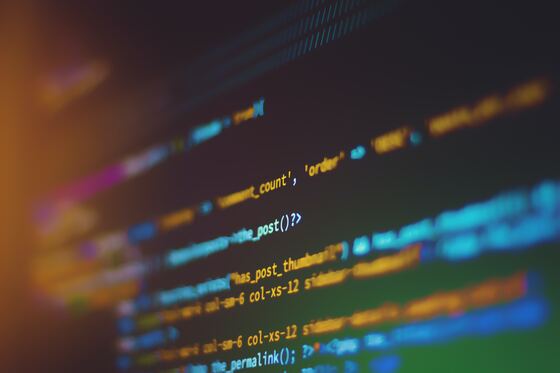
Data leaks in Laravel applications can be a nightmare for businesses and users alike. Imagine sensitive information falling into the wrong hands – it’s a scenario no one wants to face. But fear not, as we delve into the world of data security within Laravel applications, uncovering vulnerabilities and sharing best practices to keep your data safe and sound. Let’s lock down those leaks before they have a chance to cause any damage!
Understanding the Vulnerabilities
Data leaks in Laravel applications can pose significant risks to the security of sensitive information. Understanding the vulnerabilities associated with these leaks is crucial for developers and businesses aiming to protect their data integrity.
One common vulnerability lies in improper input validation, where malicious users can exploit forms or APIs to inject harmful code into the application. This can lead to unauthorized access to databases or files containing confidential data.
Another key vulnerability is inadequate authentication and authorization mechanisms. Weak passwords, lack of multi-factor authentication, or overly permissive access controls can create loopholes for attackers to gain unauthorized entry into the system.
Insecure direct object references and insufficient logging and monitoring practices can also contribute to data leaks by allowing attackers to manipulate URLs or exploit untracked activities within the application.
By recognizing these vulnerabilities and taking proactive measures to address them, developers can significantly reduce the risk of data leaks in Laravel applications.
Common Causes of Data Leaks in Laravel
Data leaks in Laravel applications can occur due to various common causes. One of the primary reasons is inadequate validation and sanitization of user input. When input data is not properly filtered, malicious users can exploit vulnerabilities to access sensitive information.
Another common cause is weak authentication and authorization mechanisms. If permissions are not correctly configured, unauthorized users may gain access to restricted data. Additionally, misconfigured security settings or missing security patches can leave your application exposed to potential breaches.
Insecure direct object references and improper error handling also contribute to data leaks. Developers need to ensure that sensitive information is not inadvertently disclosed through error messages or insecure object references within the codebase.
Understanding these common causes of data leaks in Laravel applications is crucial for implementing robust security measures to safeguard against potential threats.
Best Practices for Preventing Data Leaks
When it comes to preventing data leaks in Laravel applications, following best practices is crucial. Start by ensuring that sensitive information such as passwords and API keys are never hard-coded into your codebase. Instead, utilize environment variables or a secure configuration file.
Regularly update your dependencies and Laravel framework to patch any known vulnerabilities that could be exploited by malicious actors. Implement proper access controls and encryption mechanisms to protect data at rest and in transit.
Utilize Laravel’s built-in security features like CSRF protection, input validation, and output escaping to prevent common attack vectors like SQL injection or cross-site scripting. Regularly audit your code for potential security flaws using tools like static analysis scanners or manual code reviews.
Remember that security is an ongoing process; stay informed about the latest security threats and updates in the Laravel community to proactively safeguard your application against potential data leaks.
Implementation of Security Measures
Implementing security measures in Laravel applications is crucial to safeguard sensitive data from leaks and breaches. One effective measure is to enforce strong authentication mechanisms such as two-factor authentication to add an extra layer of protection. Additionally, implementing role-based access control ensures that users only have access to the information relevant to their roles.
Regularly updating Laravel and its dependencies helps in patching any vulnerabilities and strengthening the overall security posture. Encrypting sensitive data at rest and in transit using secure protocols like HTTPS adds another level of protection against unauthorized access.
Utilizing security headers like Content Security Policy (CSP) can help prevent cross-site scripting attacks by controlling which resources a browser is allowed to load for a given page. Implementing input validation and sanitization can mitigate risks associated with SQL injection and other common attack vectors.
Employing web application firewalls (WAFs) can provide real-time monitoring and filtering of HTTP traffic, blocking malicious requests before they reach the application layer. Conducting regular security audits and penetration testing helps identify potential weaknesses proactively, allowing for timely remediation actions.
Testing and Monitoring for Data Leaks
Testing and monitoring for data leaks is crucial in ensuring the security of Laravel applications. Regularly conducting penetration testing can help identify vulnerabilities that could potentially lead to data leaks. This involves simulating real-world cyber attacks to uncover weaknesses in the system.
Implementing continuous monitoring tools can also aid in detecting any suspicious activities or unauthorized access to sensitive data. By setting up alerts and notifications, you can promptly respond to any potential threats before they escalate into full-blown data breaches.
It is important to stay vigilant and proactive when it comes to safeguarding your application against data leaks. Regularly reviewing access controls, encryption methods, and authentication processes can significantly reduce the risk of unauthorized data exposure.
By investing time and resources into robust testing and monitoring practices, you can better protect your Laravel application from falling victim to data leaks that could compromise the integrity of your users’ information.
Conclusion
Protecting your Laravel applications from data leaks is crucial for maintaining the security and trust of your users. By understanding the vulnerabilities, common causes, and best practices outlined in this article, you can proactively prevent data leaks and mitigate potential risks.
Remember to implement security measures such as access control, encryption, input validation, and proper error handling. Regularly test your application for vulnerabilities and monitor its performance to ensure that no data leaks occur.
By following these guidelines and staying informed about the latest security trends in Laravel development, you can safeguard your applications against data breaches and protect sensitive information from falling into the wrong hands. Stay vigilant, stay proactive, and keep your Laravel applications secure at all times.